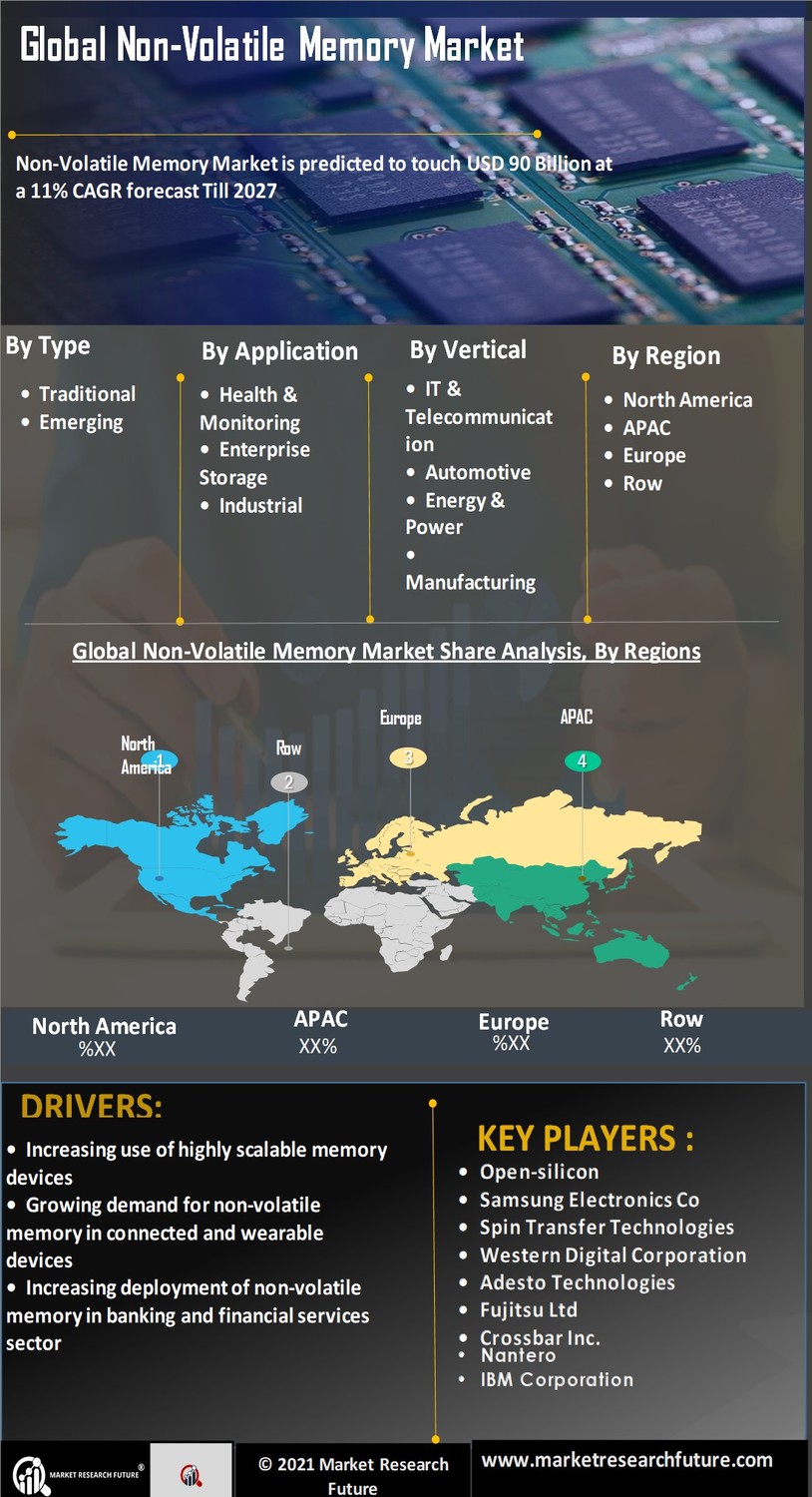Increasing Adoption of IoT Devices
The proliferation of Internet of Things (IoT) devices is a key driver for the Non-Volatile Memory Market. As more devices become interconnected, the demand for efficient data storage solutions escalates. Non-volatile memory provides the necessary reliability and speed for these devices, which often require constant data access. According to recent estimates, the number of IoT devices is projected to reach 30 billion by 2030, creating a substantial market for non-volatile memory solutions. This trend indicates a growing need for memory that retains data without power, making it essential for applications in smart homes, industrial automation, and healthcare. The Non-Volatile Memory Market is thus positioned to benefit significantly from this surge in IoT adoption, as manufacturers seek to enhance device performance and user experience.
Expansion of Automotive Electronics
The automotive sector's transformation towards electrification and automation is significantly influencing the Non-Volatile Memory Market. Modern vehicles are equipped with advanced electronic systems that require reliable data storage solutions. Non-volatile memory plays a crucial role in applications such as infotainment systems, advanced driver-assistance systems (ADAS), and vehicle-to-everything (V2X) communication. The automotive electronics market is projected to grow substantially, with estimates suggesting it could reach USD 400 billion by 2025. This expansion indicates a heightened demand for non-volatile memory solutions that can withstand harsh automotive environments while ensuring data integrity. As the automotive industry continues to innovate, the Non-Volatile Memory Market is likely to experience increased opportunities for growth and development.
Growing Focus on Data Security and Integrity
The escalating concerns regarding data security and integrity are propelling the Non-Volatile Memory Market forward. As cyber threats become more sophisticated, organizations are prioritizing secure data storage solutions that can protect sensitive information. Non-volatile memory technologies, such as encrypted flash memory, offer enhanced security features that are essential for safeguarding data. The Non-Volatile Memory is projected to reach USD 300 billion by 2025, reflecting a growing emphasis on protecting data assets. This trend suggests that the Non-Volatile Memory Market will likely benefit from increased investments in secure memory solutions, as businesses seek to mitigate risks associated with data breaches and ensure compliance with regulatory standards.
Rising Demand for High-Performance Computing
The increasing need for high-performance computing (HPC) across various sectors is driving the Non-Volatile Memory Market. Industries such as finance, healthcare, and scientific research require rapid data processing and storage capabilities. Non-volatile memory solutions, such as NAND flash and 3D XPoint, offer the speed and efficiency necessary for these applications. The HPC market is expected to grow at a compound annual growth rate (CAGR) of over 7% in the coming years, indicating a robust demand for advanced memory technologies. This growth is likely to propel the Non-Volatile Memory Market as organizations invest in infrastructure that can handle large datasets and complex computations. Consequently, the integration of non-volatile memory into HPC systems is becoming increasingly vital for maintaining competitive advantages.
Emergence of Artificial Intelligence and Machine Learning
The rise of artificial intelligence (AI) and machine learning (ML) technologies is reshaping the landscape of the Non-Volatile Memory Market. These technologies require vast amounts of data to function effectively, necessitating efficient and reliable storage solutions. Non-volatile memory provides the speed and durability needed for AI and ML applications, which often involve real-time data processing and analysis. The AI market is anticipated to grow at a CAGR of over 20% in the next few years, indicating a robust demand for memory solutions that can support these advanced technologies. As organizations increasingly adopt AI and ML, the Non-Volatile Memory Market is expected to expand, driven by the need for high-performance data storage that can keep pace with technological advancements.

















Leave a Comment